When a new drug hits the market, everyone assumes it’s been thoroughly tested. Clinical trials involve thousands of patients, years of research, and strict regulatory reviews. But here’s the truth: drug safety signals often don’t show up until the drug is used by hundreds of thousands of people in the real world. That’s when the real risks emerge - not in controlled labs, but in messy, complex human lives.
What Exactly Is a Drug Safety Signal?
A drug safety signal isn’t a confirmed danger. It’s a warning sign. Think of it like a flickering light on your car’s dashboard - it doesn’t mean the engine is broken yet, but it’s telling you to check something out. According to the Council for International Organizations of Medical Sciences (CIOMS), a signal is information that suggests a possible link between a medicine and an unexpected side effect. It’s not proof. But it’s enough to demand investigation. These signals come from real-world data, not just clinical trials. Most come from spontaneous reports - doctors, patients, or pharmacists typing into a database that a patient had a strange reaction after taking a drug. The FDA’s FAERS database alone holds over 30 million of these reports. The EMA’s EudraVigilance system handles more than 2.5 million a year. These aren’t perfect records. Many lack details. Some are duplicates. Others are wrong. But together, they form a massive early-warning system.Why Clinical Trials Miss the Worst Risks
Clinical trials are designed to prove a drug works, not to catch every possible side effect. They typically include 1,000 to 5,000 people. That sounds like a lot - until you realize that some dangerous reactions happen in 1 out of 10,000 patients. In a trial of 5,000, you’d need 20 trials just to have a 50% chance of spotting it. Trials also exclude people who are most at risk: the elderly, those with multiple chronic conditions, pregnant women, or people taking five or more other drugs. But in real life, that’s who uses the drug most. A 2020 study found that 68% of patients taking new diabetes drugs were on three or more other medications - a scenario rarely tested before approval. And then there’s time. Clinical trials last months, sometimes two years. But some side effects take years to appear. Bisphosphonates, used for osteoporosis, were linked to jaw bone death only after seven years of widespread use. That’s not a failure of the trial - it’s a limitation of its design.How Signals Are Found: Stats, Patterns, and Noise
Pharmacovigilance teams don’t just read reports. They use math. One common method is disproportionality analysis. If 100 people take Drug X and 5 of them develop a rare liver problem, but only 1 in 10,000 people taking other drugs get it, that’s a red flag. The system calculates a Reporting Odds Ratio (ROR). If it’s above 2.0 and there are at least three cases, it becomes a signal. Other tools include Bayesian Confidence Propagation Neural Networks (BCPNN) and Proportional Reporting Ratios (PRR). These are powerful - but noisy. Studies show 60 to 80% of statistical signals turn out to be false alarms. One 2019 case flagged canagliflozin as increasing amputation risk based on FAERS data. The signal looked strong - ROR of 3.5. But when researchers ran a real controlled trial (CREDENCE), the actual risk increase was 0.5%. The signal was statistical noise, not a real danger. That’s why experts insist on triangulation. A real signal shows up in at least three different data sources: spontaneous reports, electronic health records, and epidemiological studies. When dupilumab, a psoriasis drug, showed a spike in eye irritation across EudraVigilance, patient registries, and ophthalmologist surveys, regulators took notice. The label was updated. Doctors started checking patients’ eyes. Outcomes improved.What Makes a Signal Actionable?
Not every signal leads to a warning label. Four things make a signal more likely to trigger regulatory action:- Replication across sources - If the same pattern shows up in FAERS, EudraVigilance, and published case studies, it’s taken seriously. Studies show this increases the chance of a label change by 4.3 times.
- Plausibility - Does the drug’s mechanism make sense? Rosiglitazone raised heart attack risk because it affected fat metabolism and inflammation pathways. That link was biologically believable.
- Severity - Death, hospitalization, or permanent injury? Those get priority. In one analysis, 87% of serious events led to label updates. Only 32% of mild ones did.
- Drug age - New drugs are watched tighter. If a signal pops up in the first five years, there’s a 68% chance it’ll change prescribing info. After that? Only 29%.
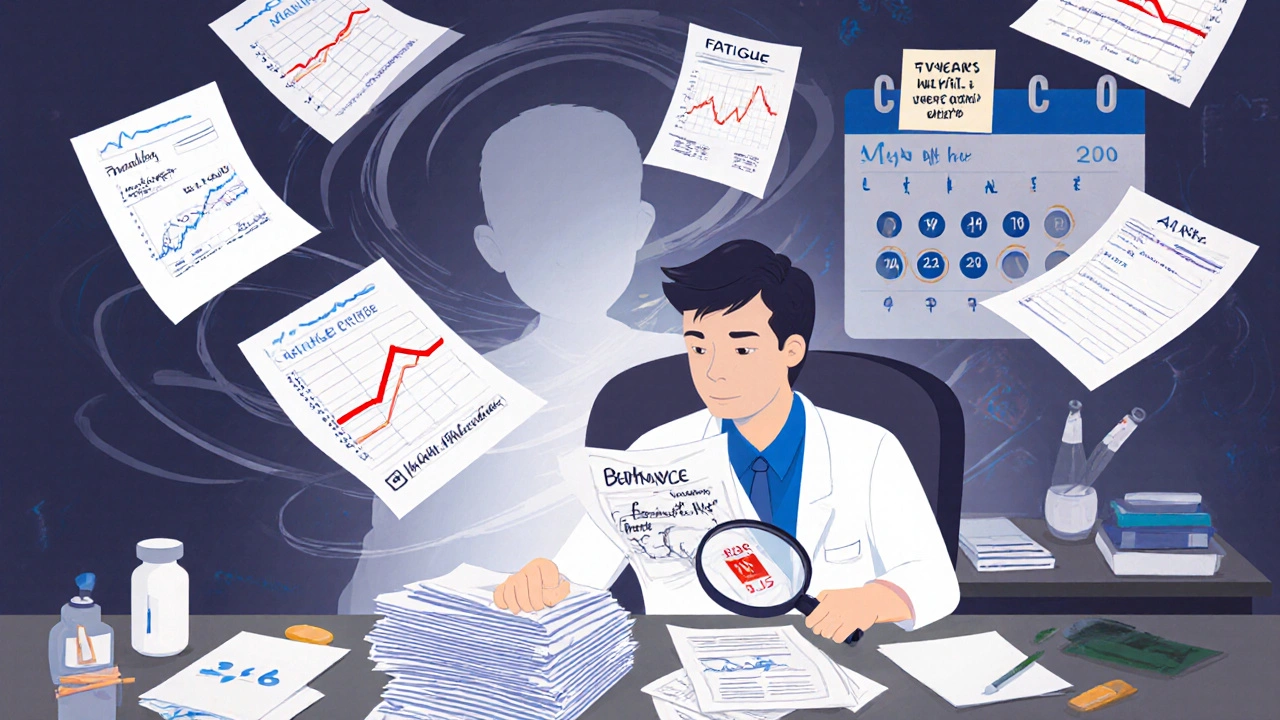
The Human Factor: Reporting Bias and Missing Data
Spontaneous reports are full of holes. A patient might forget to mention they took a new supplement. A doctor might not report a mild rash. But serious events? Those get reported 3.2 times more often than mild ones. That skews the data. And follow-up? It’s rare. Only 12% of reports in FAERS have enough detail to determine if the reaction was truly caused by the drug. Did the patient stop the drug and get better? Did they restart it and get worse again? That’s called dechallenge/rechallenge - the gold standard for proving causality. But it’s almost never documented. A 2021 survey of 327 pharmacovigilance professionals found that 73% said the biggest frustration was the lack of standardized ways to judge if a drug actually caused the reaction. There’s no universal checklist. One company might call it “possible,” another “unlikely.” That inconsistency slows everything down.How Technology Is Changing the Game
The old way - waiting for reports to pile up, then running monthly statistical checks - is outdated. In 2022, the EMA rolled out AI algorithms in EudraVigilance. Now, signals are flagged in 48 hours instead of two weeks. The FDA’s Sentinel Initiative 2.0, launched in January 2023, pulls data from 300 million patient records across 150 U.S. healthcare systems. That’s real-time monitoring - not just after the fact. AI doesn’t replace humans. It filters the noise. It spots patterns humans miss - like a sudden spike in kidney injury among patients on a new blood pressure drug who also started taking a specific generic supplement. That’s something a human might overlook in a sea of 10,000 reports. Still, tools aren’t perfect. A 2023 study showed AI flagged 30% more signals than traditional methods - but 70% of those were still false. The trick is using AI to prioritize, not decide. Humans still need to look at the clinical picture: What was the patient’s history? Were there other drugs? Did symptoms resolve after stopping?What Happens When a Signal Is Confirmed?
If a signal becomes a verified risk, regulators act. That could mean:- Adding a warning to the drug’s label
- Restricting use to certain patients (e.g., only for those who failed other treatments)
- Requiring doctors to complete training before prescribing
- Launching a patient alert campaign
- In rare cases, pulling the drug off the market
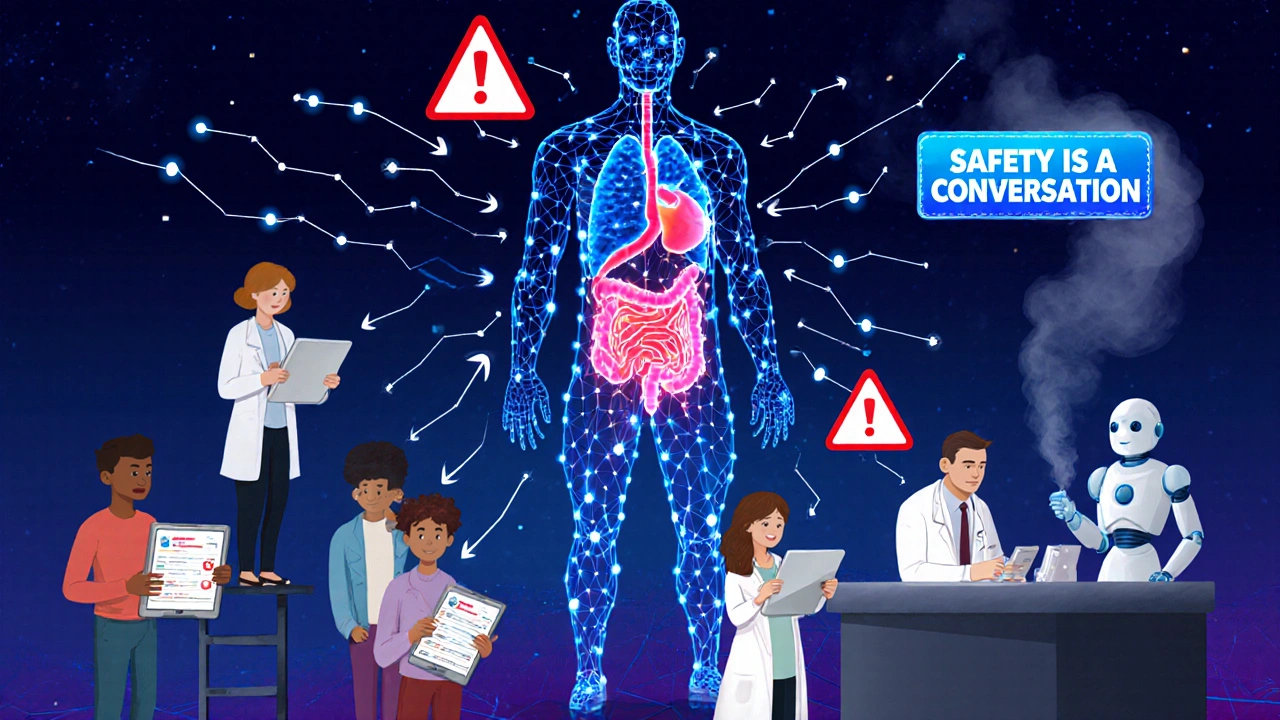
The Future: Bigger Data, Bigger Challenges
The global pharmacovigilance market is growing fast - $6.8 billion in 2022, projected to hit $17 billion by 2030. Why? Because regulators now require every new drug to include a formal signal detection plan. That’s non-negotiable. But new drugs are more complex. Biologics, gene therapies, and cell treatments don’t behave like old pills. Their side effects are unpredictable. And digital health tools - apps that track symptoms or wearables that monitor heart rhythms - are flooding systems with new data. Can we use patient-reported sleep disturbances from an app to detect liver toxicity? Maybe. But we don’t have the standards yet. The biggest blind spot? Elderly patients on multiple drugs. Since 2000, prescription use in people over 65 has jumped 400%. Yet signal detection systems still treat patients as if they’re taking one drug, not five. That’s where the next wave of risk hides - in drug interactions no trial ever tested.What Patients and Doctors Should Know
You don’t need to understand statistical models. But you do need to know this: drugs aren’t perfectly safe on day one. Safety is a process, not a guarantee. If you notice something unusual - a new rash, sudden fatigue, confusion - report it. Your doctor’s report might be the first signal that saves someone else’s life. Doctors, don’t wait for official warnings. If you see a pattern in your own patients - even just two or three cases - document it. Reach out to your regional pharmacovigilance center. You’re not just treating a patient. You’re helping build the safety net for everyone.Frequently Asked Questions
What’s the difference between a side effect and a safety signal?
A side effect is a known, documented reaction listed in the drug’s prescribing information - like nausea or dizziness. A safety signal is an unexplained pattern that hasn’t been confirmed yet. It’s a potential new risk that needs investigation. Not every side effect becomes a signal. Not every signal turns into a confirmed risk.
Can a drug be pulled from the market because of a signal?
Yes, but it’s rare. Signals are warnings, not verdicts. A drug is only withdrawn if multiple sources confirm a serious, unavoidable risk that outweighs its benefits. Examples include Vioxx (heart attack risk) and Fen-Phen (heart valve damage). Most signals lead to label changes, not removal.
Why do some signals take years to be confirmed?
Because rare events need time to show up. If a reaction happens in 1 in 50,000 people, you need tens of thousands of patients taking the drug for years to see enough cases. Also, data collection and analysis take months. Regulatory review adds more time. It’s not slow - it’s thorough.
Are newer drugs riskier than older ones?
Not necessarily. But they’re less understood. Older drugs have been used by millions, so their risks are well-mapped. New drugs may have unknown long-term effects or interactions. That’s why signal detection is most active in the first five years after approval.
Can I report a side effect myself?
Yes. In Australia, you can report to the Therapeutic Goods Administration (TGA). In the U.S., use the FDA’s MedWatch portal. In the EU, contact your national authority. Your report, even if brief, adds to the global safety database. You don’t need a doctor’s note. Just describe what happened, when, and what drug you took.

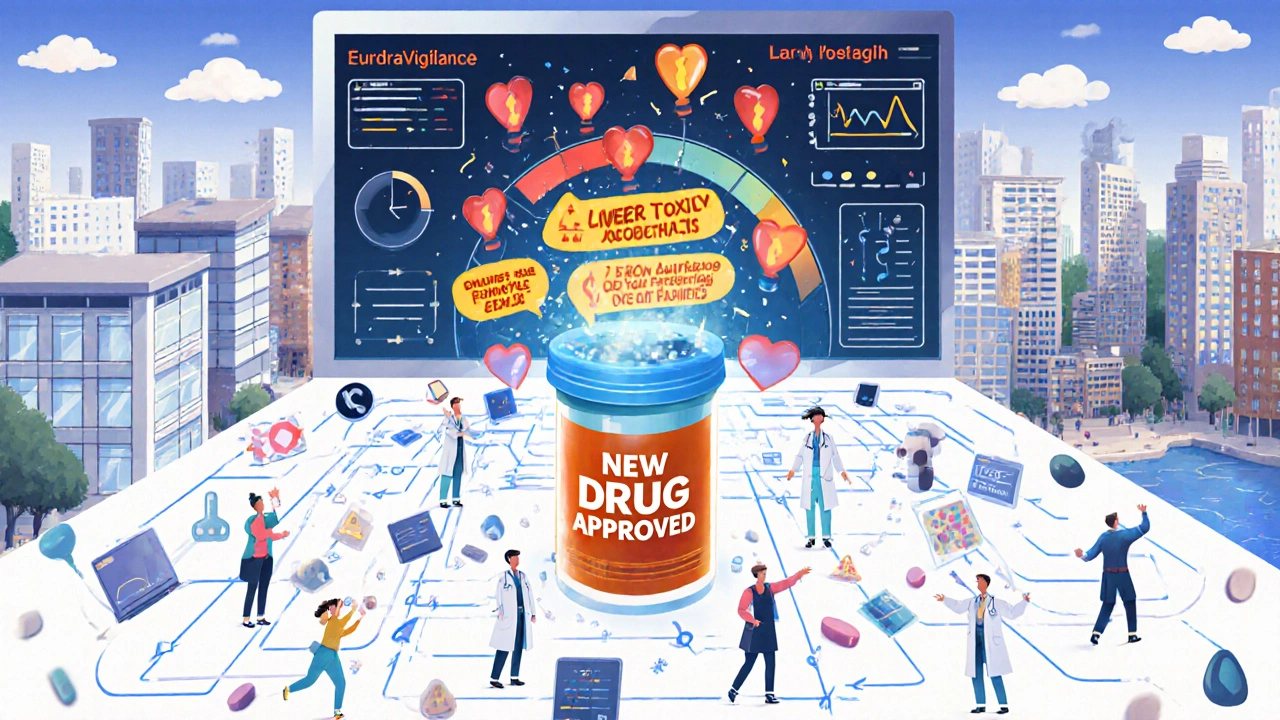
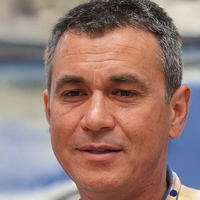

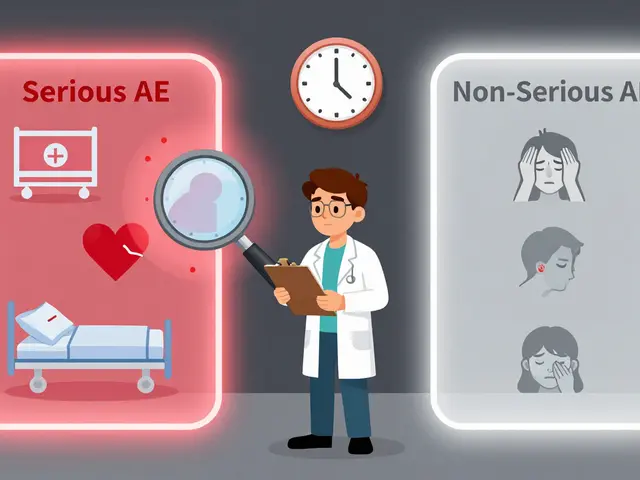
November 15, 2025 AT 05:05 AM
Just had my grandma on a new blood pressure med last year. She started getting dizzy and confused - doc said it was 'just aging.' Turned out it was the combo with her diabetes pill. Took three months and three ER visits to connect the dots. If I hadn't kept a sticky note on the fridge with every pill she took, we'd never have figured it out. Real talk: patients are the best pharmacovigilance tools we've got. Just don't expect anyone to listen until it's too late.
November 15, 2025 AT 11:10 AM
There's an ontological paradox here, isn't there? We build systems to detect the unforeseen, yet those systems are built on the very assumptions that blind us to the unforeseen. The data is fragmented, the causality is inferential, the reporting is biased - and yet we treat statistical outliers as gospel. We're not detecting signals; we're constructing narratives out of noise, then institutionalizing them as truth. The drug isn't dangerous - our epistemology is. We mistake correlation for causation, and then we write warnings in blood ink while ignoring the fact that the ink itself is made from the same flawed assumptions.
November 17, 2025 AT 04:19 AM
Really appreciate how thorough this breakdown is - especially the part about triangulation. It’s so easy to get scared by a single report or a flashy ROR number, but the truth is, real safety signals need to echo across multiple systems. I’ve seen so many false alarms in my work with EHR data - one month, every single patient on a new antihypertensive was flagged for ‘sudden fatigue,’ but it turned out they’d all started taking the same generic magnesium supplement. AI caught the spike, but only human review caught the supplement link. We need more tools like Sentinel, but we also need more trained humans who actually understand clinical context - not just algorithms that spit out red flags.
November 17, 2025 AT 14:16 PM
This article reads like a corporate white paper disguised as public education. The pharmaceutical industry has spent decades convincing the public that their products are safe, and now they’re using the language of transparency to deflect responsibility. The fact that we rely on spontaneous reports from overworked doctors and confused patients is not a feature - it’s a failure. If you want real safety, stop outsourcing detection to a broken system and fund independent, long-term post-market surveillance. Stop calling it ‘pharmacovigilance’ and start calling it what it is: damage control.
November 17, 2025 AT 22:01 PM
So let me get this straight - we give people a drug, wait for them to get sick, then ask them to report it… and we call that science? 🤡
November 19, 2025 AT 04:48 AM
they dont want you to know this but the FDA and big pharma are in bed together the real danger is the AI they use to bury the signals not find them i read on a forum that the algorithms are trained to ignore reports from elderly patients and people in rural areas because theyre 'too noisy' also the jwh-018 in the blood pressure med is actually a synthetic cannabinoid that was banned in 2018 but they just renamed it and slipped it in as a 'stabilizer' its all a cover up
November 20, 2025 AT 19:25 PM
You Americans think your system is the best but in Nigeria we just give the drug and if the person dies its his problem. We dont waste time with reports and databases. We dont have time for your statistical noise. If your grandma gets dizzy she should have eaten better. Your system is weak because you are weak. We dont need AI to tell us what a bad drug does. We just stop giving it. Simple. No reports. No labels. Just no.
November 22, 2025 AT 07:54 AM
Look - I work in clinical data ops for a global pharma firm. The real issue isn’t the tech or the stats - it’s the silos. EHRs don’t talk to FAERS. Patient apps don’t feed into EudraVigilance. Pharmacists don’t have access to the same dashboards as hospital pharmacovigilance teams. We’ve got petabytes of data, but it’s locked in 17 different formats across 30 countries. AI can’t fix that. Only integration can. And no one wants to pay for it. So we get these flashy articles about signals… while the real danger - polypharmacy in the elderly - keeps growing. We’re not detecting signals. We’re just yelling into a void.